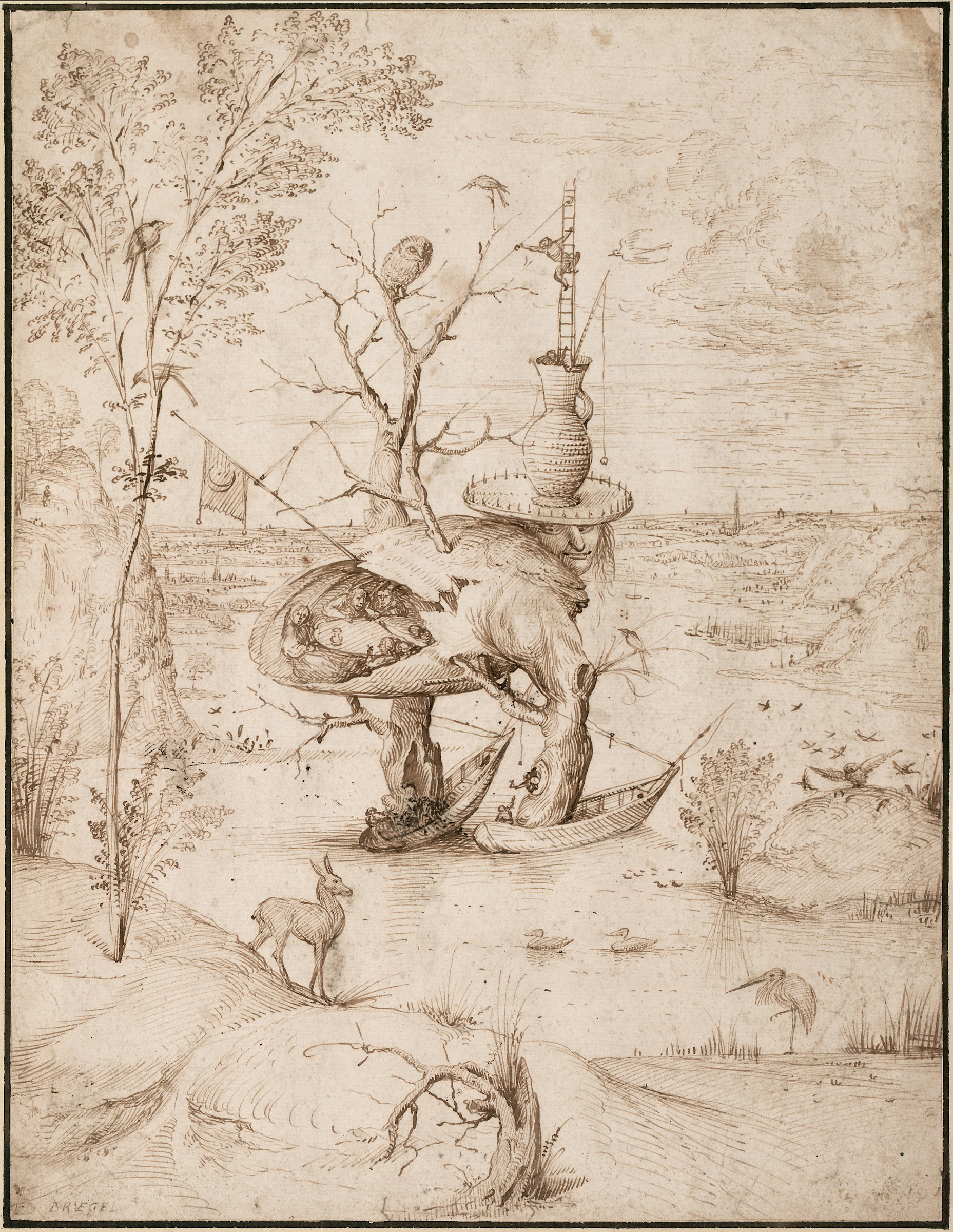The Tree-Man, probably Bosch's most famous drawing, shows a gigantic hybrid of a tree and a human against the background of a landscape, including plants, trees, owls, and ducks. The only human element of the Tree-Man is his face turned sideways.
In the hollow torso of the creature, we see a group of people gathered around a table, suggesting a tavern scene. The Tree-Man stands on two boats with a pitcher and ladder on his head, and the shaky construction appears to be held upright only by a few knotted ropes. The owl sitting on one of the branches, the drinking jug on the creature’s head, the bagpipe, and the moon on the flag are all loaded with negative symbolism.
All elements of the artwork, including the figure of the Tree-Man and the surrounding fauna and flora, are precisely crafted, showcasing Bosch’s unique drawing skills, from the solid pen lines of the central motif to the finest dashed lines on the horizon.
The combination of natural landscape and fantasy world is a typical example of Bosch's artistic style. Moreover, there are visible similarities with the Tree Man who appeared in Hell, in The Garden of Earthly Delights.
We present today's work thanks to Europeana, which is a web portal created by the European Union containing digitized cultural heritage collections of more than 3,000 institutions across Europe. The Tree-Man belongs to the Albertina's collection. :)
P.S. Did you know that in The Garden of Earthly Delights Bosch recorded a musical score on a human bottom? Listen to a reconstruction of this butt music. :D
P.P.S. Don't forget to start 2023 with our DailyArt Calendars (and a Planner!), full of art and art history stories.


 Hieronymus Bosch
Hieronymus Bosch